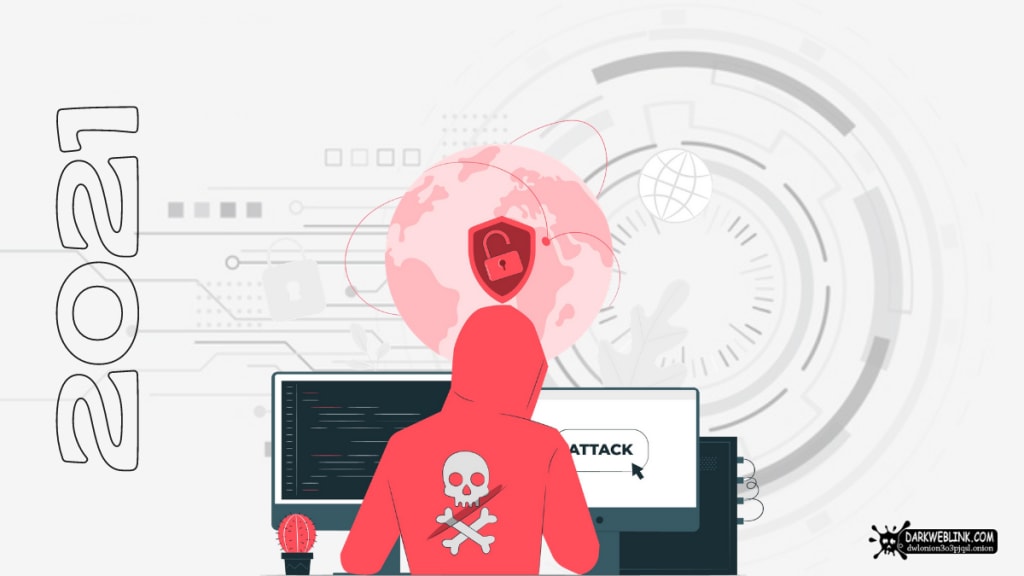10+ Important Cybersecurity Threats To Watch Out In 2021
Cybersecurity threats have been a serious issue in the IT sectors these days as hackers are in search of loopholes causing data breaches. Here are the eminent cyber threats you need to be aware of.

Do you have a love-hate relationship with technology? Despite your relationship status with the technology, undoubtedly it covers the lionshare of your daily life. The rigorous digitalization and the excessive usage of the internet for the purpose have opened doors for hackers and malicious attackers to cause data loss creating havoc in businesses. As the pandemic has shifted businesses from a physical workplace to a completely digital workplace, the rate of cyberattacks of all kinds has increased massively in 2020-2021.
A host of the latest and trending cybersecurity threats have diverted the information security industry on high alerts. With each passing day, the cyberattacks involving phishing, malware, artificial intelligence, machine learning, cryptocurrency, and more are getting even better and sophisticated. This has ultimately put the data and assets of the organizations, individuals, and government at constant risk.
Here we will discuss the common cyberattacks that businesses are falling prey to. This can also be considered as the cybersecurity for the remote workers’ guide.
What Are Cyber Threats?
The term “cyber” used to be utilized for referring to cybernetics or the science of understanding the movement and control of machines and animals in the 1950s. This followed the understanding of the “computerized”.
In the 1990s, however, a new cyber-related term had been introduced. The term was “cyberspace” that had emerged to define an invented physical space, which some people wanted to trust that exists behind the computing devices’ electronic activities.
Currently, the term is exclusively used for describing information security matters. Owing to the fact that it is hard to visualize the way digital signals are traveling across a wire that can show an attack, we have granted to visualizing the digital phenomenon as a physical one.
A cyber attack can be termed as an attack that is mounted against digital devices using cyberspace. Cyberspace is a digital space that does not exist usually but helps to understand the digital weaponry intending to harm us. The only real thing is the intention of the hacker along with the strong impact. Many cyberattacks are just nuisances, but some are pretty serious which can even be human life-threatening.
Why Protecting From Cyber Threats Is Quintessential?
Cyber threats are indeed a big deal. They can cause electrical blackouts, breaches of national security secrets, and failure of the military equipment. They can also cause theft of valuable and sensitive data such as medical records. They can also go further and disrupt the computer networks, phones and can even paralyze systems, leaking out data. As already stated, cyber attacks can also affect life functioning.
The government of the U.S. had explained that it had undergone several crippling data breaches in the past few years. Some of the examples include the theft of the US Naval codes and the valuable data breach of the Federal Office of personnel management. Both of the attacks have been related to the Chinese State intelligence agencies.
Important Cybersecurity Threats For Businesses To Avoid In 2021
2021 seems to have been experiencing a surge in the cybersecurity risks caused by various cyber attacks. With time and experience, the hackers seem to get going with the more complicated cyberattacks. This article lists out the important cybersecurity threats that you need to watch out for in 2021 and beyond:
❃ Cloud-Based Threats/Cloud Jacking
The companies are becoming digital and they are moving to cloud computing simultaneously. The cloud will reshape the work operation of the businesses or the organizations in 2021 and beyond that. The rapid migration to the cloud exposes businesses to various cybersecurity vulnerabilities and challenges. Some of the cloud services issues increasing cybersecurity risks include - data deletion that remains incomplete, diminished control and visibility, cloud app vulnerabilities or risks, and misconfigurations in the cloud storage.
❃ Deepfakes
A deepfake can be regarded as the use of AI or artificial intelligence and machine learning for manipulation of a presentation video or image of a person for showing some activities that never happened. For 2021 and post that year it will be a significant cybersecurity threat that will be used for malicious intentions. It will be used to conduct fraud through synthetic identities and there will be a surge in the deepfake-as-a-service organizations. It will render even more convincing phishing scams giving rise to businesses losing billions of dollars.
❃ Fileless Attacks
Fileless attacks are a subpart of Living off the Land (LotL) attacks that exploit the features and tools present in the environment of the victims. This sort of attack never depends on the file-based payloads and usually never generates new files. That being said, they are often identified by conventional detection as well as prevention solutions such as the antivirus.
❃ Insider Threats
The 2020 Data Breach Investigations Report produced by Verizon states that around 30 percent of the security breaches bear the support of internal influence. The insider threat includes both the mishandling of the data and the systems by the active employees and the malicious attacks. It is noticed to be rising even more in 2021 and beyond that. The insider threats will include unauthorized logins, new apps being installed on the locked computers, and more.
❃ IoT Devices
It has been pointed out in a Fortune Business report that the IoT or the Internet of Things market will grow to $1.1 trillion by the end of 2026. This will increase the complex cybersecurity threats. Furthermore, there could also be a massive threat to the IoMT or The Internet of Medical Things that may develop a deep-rooted internet health crisis. Since the majority of the trending IoT devices are in their newborn stage, it offers a lot of scopes to create a large cyberattack surface so that the criminals can target the vulnerabilities that are associated with these technologies.
❃ Malvertising
Malvertising, the abbreviation of malicious advertising is the utilization of online advertisements for spreading different malware. Malvertising is noticed in two latest trends -
- Advertisements that target the mobile devices or smartphones connected to fraudulent apps or fleeceware.
- Technical support scams that engage in the browser locking of the webpages.
Both of these cyberthreat trends can be categorized as ‘fake alert’ attacks where the malvertisement is designed to intimidate the target into taking an action fulfilling the scammers’ personal interests. The technical support scams, however, force the victims to provide their system’s remote access. Then either their credit card data is compromised for fraudulent purposes or are subscribed to the steep-priced technical support services and software.
The scammers also make use of the ‘pull model’ where they display malicious web-based advertisements on the victim’s computer convincing the users that they have been locked out of their computers owing to some security purposes. Thus, the victims forcibly reach out to the scammers themselves seeking help.
❃ Phishing Attacks
Phishing scams are carried on using social engineering techniques in the cloud services attacks and traditional emails. It can cause Account Takeover (ATO), Business Email Compromise (BEC), credential theft, ransomware, and other security breaches. The hackers send email or text messages (smishing) disguised to be messages or emails from trusted individuals such as a coworker, seniors, business associates or managers and trick the employees into opening the malware containing emails or download the malicious links which then activates the sent malware or the hackers gain unauthorized access.
❃ Ransomware Attacks
Over the past few years, ransomware attacks have been a crucial concern for businesses and in some cases the individuals. The ransomware kits are available at the cheapest rate and are widely available on dark web forums and marketplaces. Thus, the ransomware operators implement innovative ways for spreading the ransomware rapidly, avoiding the endpoint security protocols, and launching successful cyberattacks on the targeted individuals and companies. The cost of ransomware will tend to be much more with each passing year.
❃ Remote Worker Endpoint Security
Due to the Covid-19 pandemic, all of the companies had turned their employees to work from home causing remote working. Many of the companies have also planned to make working from home permanent beyond 2021. This offers an amazing opportunity for hackers. Most of the remote employees operate without taking any network perimeter security. Thus, they miss out on the crucial part of the cybersecurity defense mechanisms. The cybercriminals have in no time adjusted to the remote working environment. They exploit the cloud-based services or cryptojacking, unpatched remote computers and, improperly set up Virtual Private Networks for hacking the network systems.
❃ Zero-Day Attack
When the developers develop any software or application, initially they make sure that it must not contain any vulnerabilities. There are times when they fail to detect any vulnerability. When the attackers spot it they try to explore the vulnerabilities and try to attack the system. This is known as the Zero Day as the attacker releases the malware for exploiting the vulnerability before the developer gets an opportunity to create a patch for fixing the vulnerabilities. The improper implementation of the System Development Life Cycle (SDLC) leads to the vulnerability that ultimately gives rise to potential and biggest cybersecurity threats.
These are the emerging cybersecurity challenges that are in their exact way to get much bigger and better.

The Most Common Information (IT) Security Threats
Apart from the ten important and emerging cyber threats discussed above, there are a couple more cyber threats that you need to consider in 2021:
↬ Trojans:
Trojan is a form of malware that gets into the host system and resembles one of its own like the software code. As soon as the malware gets into the system, it ejects a malicious code that hacks or attacks the system. This malware has been named after ancient Greek history’s Trojan horse.
↬ MitM or Man in the Middle Attack:
This is a form of attack where the attacker creates a position in between the sender and the recipient of the electronic messages. What the attacker does is intercepts tier messages and alters the messages when they are in transit. In such occurrences, both the sender and the recipient are unaware of the fact that their access has been taken over by the attacker. They believe that their messages are encrypted and that the messages are directly sent and received by the sender and the recipient.
↬ DDoS/ DoS:
The Distributed Denial of Service (DDoS) occurs when an attacker controls several devices and utilizes them for targeting the functions of a system. They may be responsible for a website crash from an overload of demand.
↬ Data Breaches:
A data breach revolves around data theft with malicious intentions. The data breach could be taken forward bearing the intention of identity theft or even to embarrass an organization or for espionage purposes as well.
Thus, here we come to the end of the cyber security threats that you will come across in 2021 and are likely to increase owing to certain circumstances. This is not just it as there is scope for other cyber threats to be a part of the cybersecurity trends in 2021 as well. This article has been made to give stress on the cyber risks that are predicted to cause harm. That said, the other data breach sources must not be ignored at the same time.
About the Creator
Bruno Marcoux
Bruno Marcoux is a dark web enthusiast specializing in cryptocurrency, blockchain, cybersecurity, law enforcement and more. He has been in the field for a good long time and thus has a stronghold of the occurrences of the Dark Web.






Comments
There are no comments for this story
Be the first to respond and start the conversation.